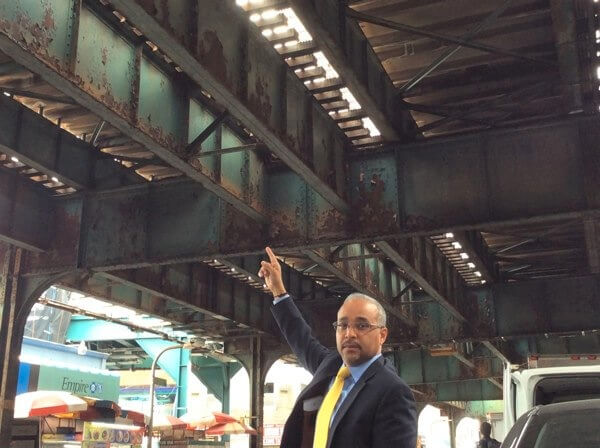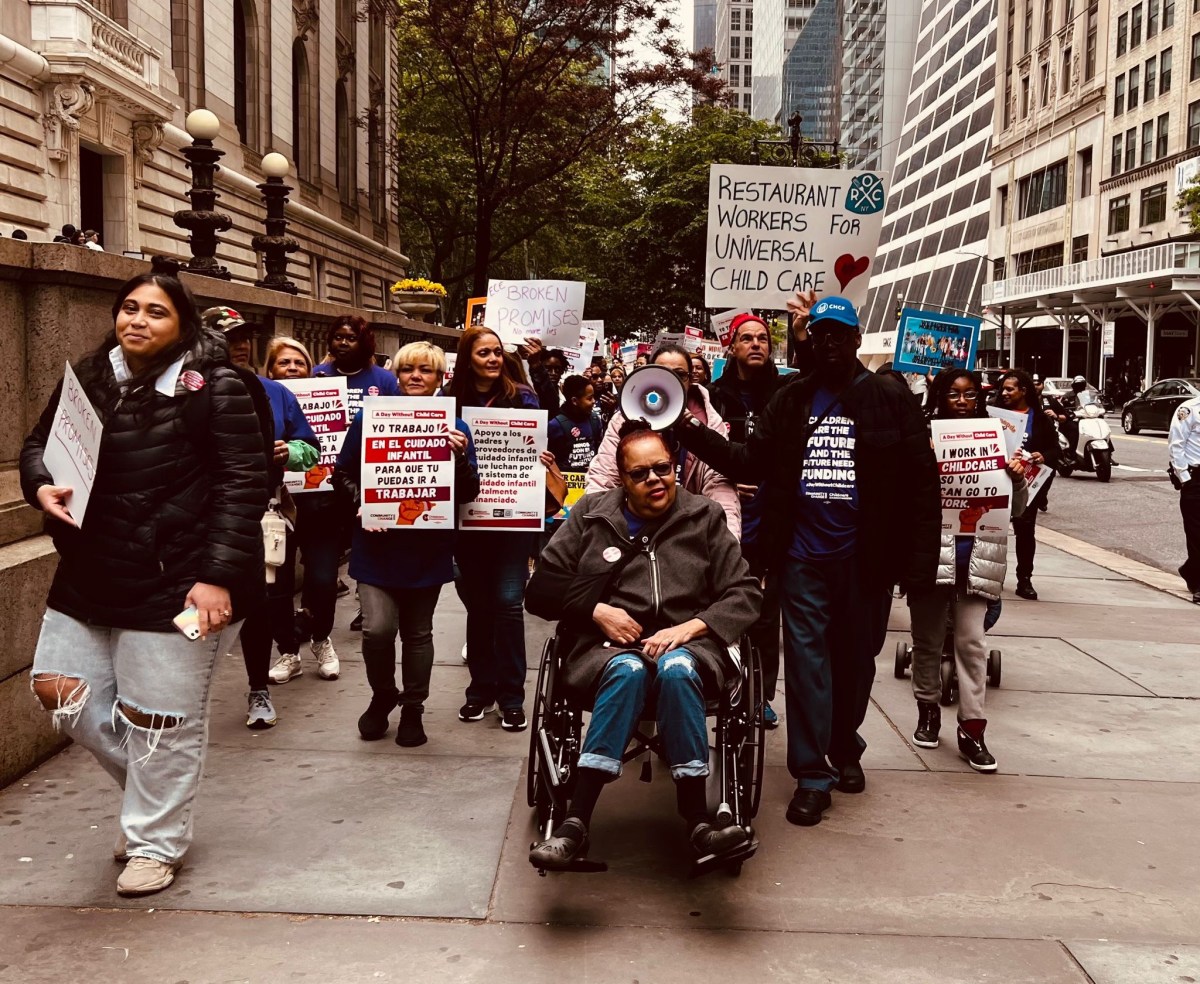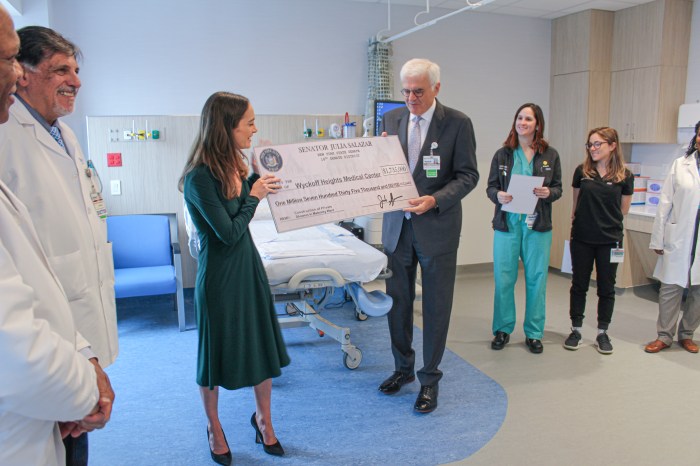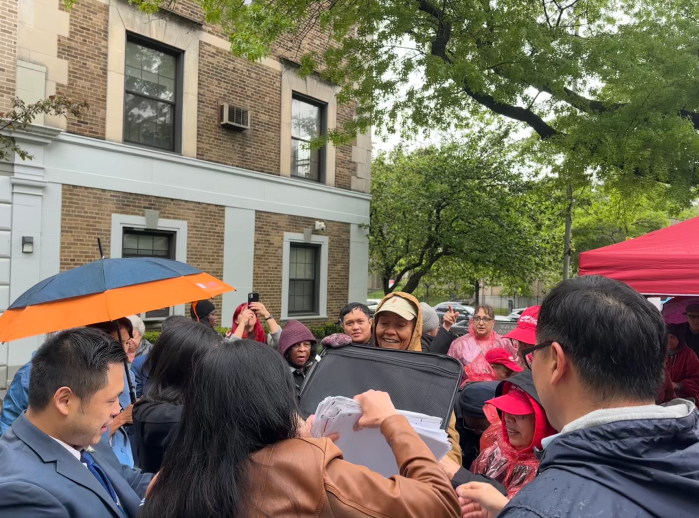By Bill Parry
City Councilman Daniel Dromm (D-Jackson Heights) sounded the alarm several weeks ago that poisonous lead-paint chips are raining down from the No. 7 elevated subway line from Long Island City to Flushing, endangering the health of residents living nearby.
On Monday, state Sen. Jose Peralta (D-East Elmhurst) joined the fight, introducing legislation that would require the MTA to conduct a study relative to the amount of lead paint at elevated subway tracks and stations throughout the city.
The bill also mandates that the study to be conducted along with the Department of Environmental Protection and the Department of Health determine the degree to which the MTA complies with the Federal Clean Air Act.
“As we just celebrated the 100th anniversary of the 7 train, what better present than repainting the trestles, above-ground stations, and making sure dangerous lead-paint chips no longer fall on our streets and sidewalks?” Peralta said. “This is the subway line that cuts through several hardworking neighborhoods like Corona, Jackson Heights, Elmhurst and Woodside.”
According to District 9 International Union of Painters and Allied Trades, some samples of paint chips falling onto the streets from the 7 line contain 224,000 parts per million of lead paint, more than 40 times the legal threshold. Lead abatement proceedings are generally required when levels top 5,000 parts per million. Exposure to poisonous levels of lead paint can result in extensive damage to a person’s central nervous system and brain.
“We need to protect everyone from dangerous lead paint chips falling onto the streets. This is why it is vital we evaluate lead paint levels and work to remove the problem from the subway’s infrastructure,” Peralta said.
The MTA says New York City Transit has an environmental consultant who has already assessed various sections along the 7 line and had previously tested air quality near the line. Those samples showed that levels were well within the National Ambient Air Quality Standards and the consultant is having other samples from along the Flushing Line analyzed again.
“We don’t comment on pending legislation. However, the safety of all our customers and the surrounding community is the top priority,” MTA spokeswoman Beth DeFalco said. “The MTA has an aggressive repainting program across the entire system, which includes proactively scraping and repainting our structures. Nearly all of the Flushing line has been repainted in recent years and the remaining 3.1-mile stretch will be done as part of the current Capital Program.”
Dromm, who identified the issue more than seven years ago, was not impressed.
“If there is one thing we’ve learned, it’s that we can’t trust the MTA. This is analysis paralysis,” Dromm said. “If the state Legislature can’t force the MTA to correct the situation and keep New Yorkers safe, no study can. It’s time we start the process of returning NYC Transit to city control.”
The MTA came under fire from city Comptroller Scott Stringer, who released an audit Monday that reveals serious gaps in maintenance of elevators and escalators. The study found the MTA did not perform all scheduled preventive maintenance on nearly 80 percent of sampled escalators and elevators, and that one-third of the MTA’s scheduled preventive maintenance assignments in the sample were completed late – if at all.
“New Yorkers constantly see and experience broken elevators and escalators – and this audit shows us why it’s happening,” Stringer said. “Preventive maintenance is late, or not happening at all, and when defects are identified, work orders aren’t always created. It’s not rocket science – it’s common sense. If we aren’t proactively servicing these machines, and if we aren’t repairing them when we find problems, they’re going to break down.
The MTA dismissed the audit results, calling them misleading, and that elevators and escalators cannot operate during even routine maintenance.
“The most in-depth inspections were all completed on time during the audit period,” DeFalco said. “We have a detailed system for the maintenance of these machines and closely track work that is done to keep our elevators and escalators safe and available for customers. We are continually looking at new ways to improve the performance of equipment and maintenance practices.”
Reach reporter Bill Parry by e-mail at bparr
































